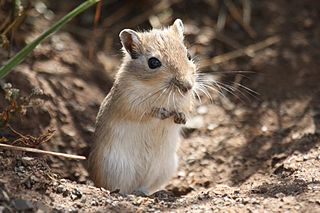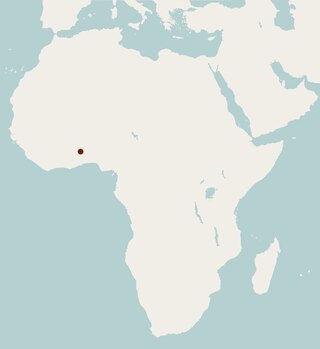
The Mongolian gerbil or Mongolian jird is a rodent belonging to the subfamily Gerbillinae. Their body size is typically 110–135 mm, with a 95–120 mm tail, and body weight 60–130 g, with adult males larger than females. The animal is used in science and research or kept as a small house pet. Their use in science dates back to the latter half of the 19th century, but they only started to be kept as pets in the English-speaking world after 1954, when they were brought to the United States. However, their use in scientific research has fallen out of favor.

Gerbillinae is one of the subfamilies of the rodent family Muridae and includes the gerbils, jirds, and sand rats. Once known as desert rats, the subfamily includes about 110 species of African, Indian, and Asian rodents, including sand rats and jirds, all of which are adapted to arid habitats. Most are primarily active during the day, making them diurnal, and almost all are omnivorous.

The Malagasy rodents are the sole members of the subfamily Nesomyinae. These animals are the only native rodents of Madagascar, come in many shapes and sizes, and occupy a wide variety of ecological niches. There are nesomyines that resemble gerbils, rats, mice, voles, and even rabbits. There are arboreal, terrestrial, and semi-fossorial varieties.

Cheesman's gerbil is a small rodent in the subfamily Gerbillinae of the family Muridae. It is distributed mainly in Arabian Peninsula to southwestern Iran. It has orange-brown fur, white underparts, large eyes and a very long tail.

Gerbillus is a genus that contains most common and the most diverse gerbils. In 2010, after morphological and molecular studies Dipodillus was ranged as a subgenus of Gerbillus, however some taxonomic authorities continue to separate them.

The Togo mouse, also known as Büttner's African forest mouse or the groove-toothed forest mouse, is a unique muroid rodent known from only two specimens taken from near the type locality of Bismarckburg, near Yege, Togo, in 1890. Its genus is monotypic.

Percival's spiny mouse is a species of rodent in the family Muridae. It is found in Kenya, Somalia, South Sudan, and Uganda. Its natural habitats are dry savanna, subtropical or tropical dry shrubland, and rocky areas. It is one of two known species of mammals, the other being Acomys kempi, capable of completely regenerating damaged tissue, including hair follicles, skin, sweat glands, fur and cartilage.
The pouched gerbil is a species of rodent in the family Muridae. It is the only species in the genus Desmodilliscus and the subtribe Desmodilliscina.

The North African gerbil is a species of rodent in the family Muridae. It is found in North Africa where its natural habitats are arable land and rocky areas of the Maghreb, and hot Saharan deserts.

The hairy-footed gerbil is a species of rodent found in Angola, Botswana, Mozambique, Namibia, South Africa, and Zimbabwe. Its natural habitats are dry savanna, temperate shrubland, hot deserts, sandy shores, and urban areas. All members of this genus have hair on the soles of their feet, hence the name. They prefer sandy soil or sandy alluvium with grass, scrub or light woodland cover.
The Namib brush-tailed gerbil or Setzer's hairy-footed gerbil is a species of rodent endemic to Angola and Namibia. Its natural habitats are sandy and gravelly plains. It stays in its burrow by day, emerging at night to feed on arthropods, vegetable matter, and seeds.
The dune hairy-footed gerbil, or the Namib dune gerbil is a species of rodent found only in Namibia. Its natural habitat is temperate desert where it lives in loose sand among sand dunes, feeding opportunistically on arthropods, seeds and green vegetation.
The bushy-tailed hairy-footed gerbil is a species of rodent found in Namibia and South Africa. Its natural habitats are dry savanna, temperate grassland, and hot deserts. It is threatened by habitat loss.
Boehm's gerbil is a species of rodent found in Angola, Burundi, Democratic Republic of the Congo, Kenya, Malawi, Mozambique, Rwanda, Tanzania, Uganda, and Zambia. Its natural habitats are dry savanna, moist savanna, and arable land. This is a common species with a wide distribution which faces no obvious threats, so in 2004 the International Union for Conservation of Nature rated its conservation status as being of "least concern".

The Indian gerbil also known as antelope rat, is a species of rodent in the family Muridae.

Gerbilliscus is a genus of rodent in the subfamily Gerbillinae (gerbils) of the family Muridae. It contains the following species, all native to Africa:










